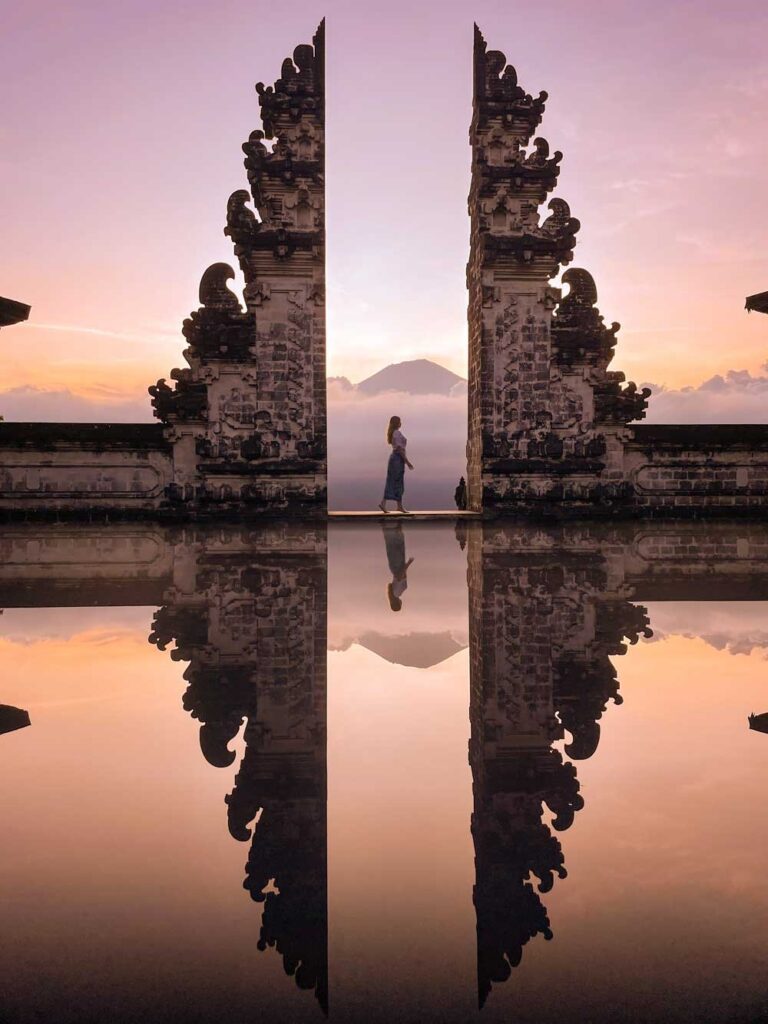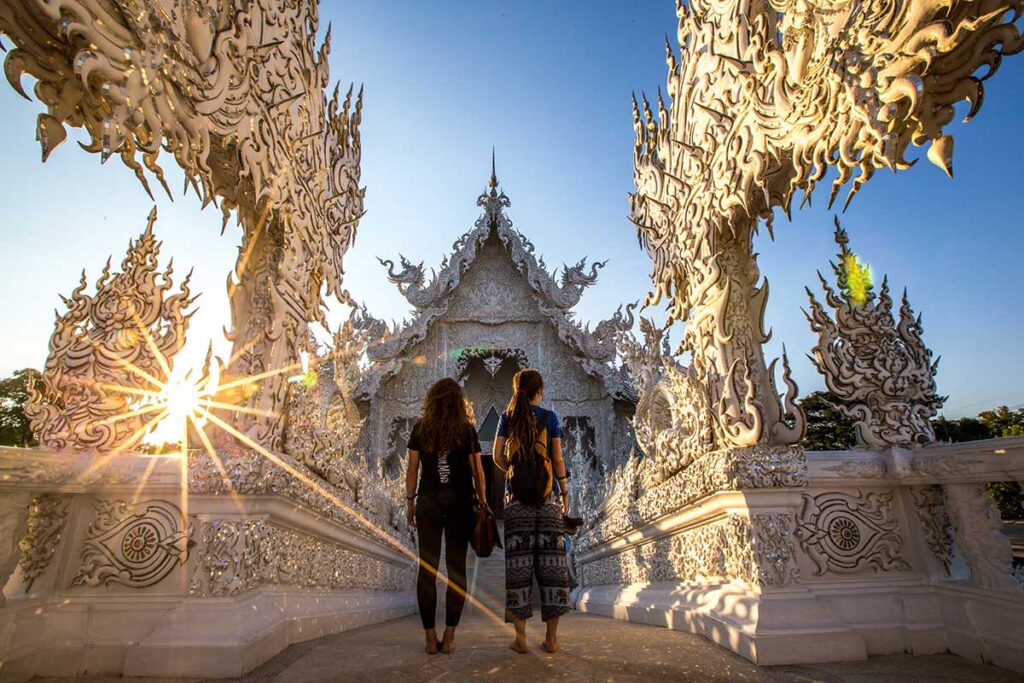
Bali’s Gates of Heaven Temple, officially known as Lempuyang Temple, is one of the most spiritually significant landmarks on the island and one of the most popular tourist attractions too. For Years, Tourists from all over the world queue for up to four hours sometimes just to have their photo taken at the iconic spot. But a village in Northern Thailand has just opened a Gate of Heaven photo spot of their own.
Northern Thailand has an incredibly unique cultural and geographical landscape, a worthy and interesting destination in its own right, but fundamentally very different from Bali. Given that Thailand is a Buddhist country with its own unique and visually impressive temple architecture, many online have called out the creators for copying Balinese Hindu temple architecture for the sake of a photo opportunity.
Some posts online have even gone as far as to call the new photo spot cultural appropriation. A few people have noted that there is a certain irony to what they see as Thai people’s criticism of Cambodians and Vietnamese people for copying Thai culture while seemingly doing similar in this situation. It is worth noting that while the Gate to Heaven in Nan offers a similar view to Bali’s Lempuyang Temple, the two sites are fundamentally different. The Lempuyang Temple is a Hindu temple and a place of worship, whereas the Gate to Heaven in Nan is primarily a tourist attraction. This distinction is crucial in the ongoing debate about cultural appropriation and originality in tourism.
The new tourist spot is open daily from 8am to 6pm, charging an entrance fee of 50 baht. Its popularity rapidly soared, attracting numerous visitors eager to capture the scenic view.
Thailand already has the famous Gates To Heaven at the “White Temple” in Chiang Rai. Built in white to represent Buddha’s purity and glass so the sun would reflect Buddha’s wisdom over the Earth. It stands in stark contrast against the azure sky, and as you approach, contorted arms extend upward as if in outreach toward you. The temple symbolizes Buddhism, where humanity’s historical sins meet the contemporary Buddhist mind. With traditional depictions mixed with contemporary culture iconography, the White Temple is endlessly complex and nuanced.

Before entering the main structure, you cross a bridge over a small lake meant to symbolize the foregoing of gluttonous, earthly pleasures and sins alike. Inside, a life-like wax figure of a monk greets you, back-dropped by a mural that colourfully and loudly illustrates the violent impact humans have had both on the earth and each other. Its glittering mirrors signifies the teachings of the Buddha to reflect kindness on to others. Every statue has meaning and is symbolic of teachings and Buddhist philosophy.
The principal building of this temple is called the Ubosot and is a simple concrete structure with a wooden roof. However, all the exteriors are covered in white plaster along with fragments of mirror glass.
The white color represents purity and the glass was used as a symbol of the wisdom of Buddha. The architecture is amazing and you will be in awe.
The roof and walls are filled with ornaments and embellishments. The architecture also comprises of traditional Thai architectural elements, such as the three-tiered roof and the stylized edges.
The sides of the main building depict flames and demon faces. The sides are comparatively less crowded so you can take some time photographing it. The details are stunning and pure art. This building represents the mind of humans and the moral is that people are wicked.
Right across the bridge is the Gate of Heaven and it’s guarded by 2 creatures, Death and Rahu. They decide the fate of the dead. This is a beautiful place to take pictures and I highly recommend using your widest angle lens possible.
The temple is located around 13 km from the city center of Chiang Rai and will take around 15 mins to reach. In my opinion, you will need some sort of transportation to reach here. I didn’t see many tuk-tuks or taxis on this spot, however, there were a lot of tourists buses.
It’s better to rent a motorbike or car if you feel comfortable driving but if not you can always book a tuktuk or taxi for a return trip. This place opens from 8 am till 5 pm on weekdays and till 5:30 pm on weekends. This isn’t a religious place but still, for some reason, locals considered it as a temple so be sure to wear modest clothes and cover your knees and shoulder. Though the temple complex is free to visit, the only section where you have to pay the entrance fee is the main area of the white temple. There is an entry fee of 50 Baht for foreigners and locals can go for free. I suggest always carrying an ID with you in case if someone asks.
